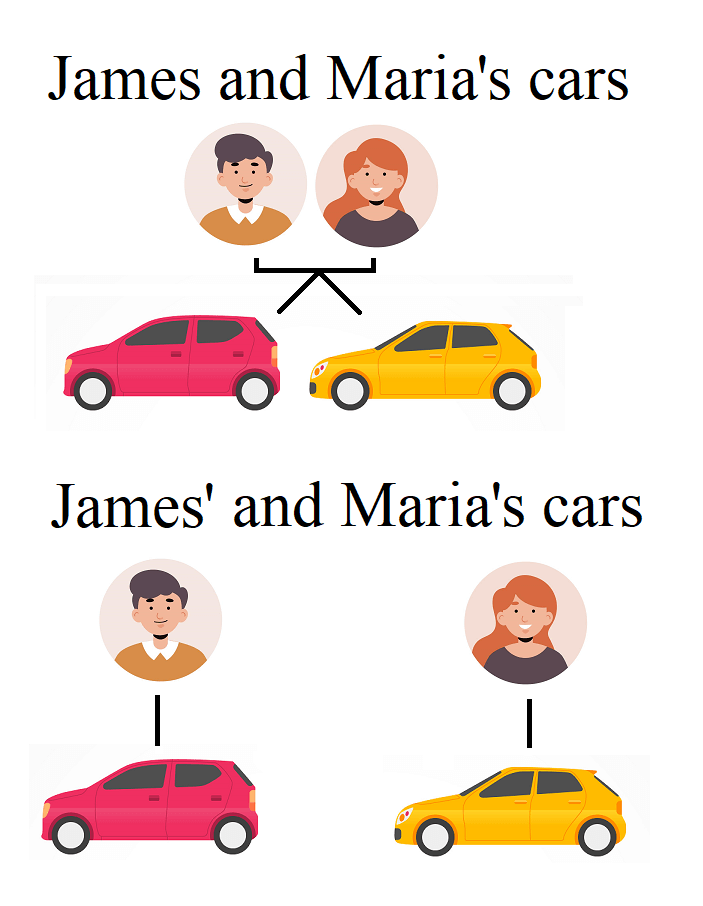Possessive Nouns
- Possessive nouns show ownership or belonging.
- Singular nouns become possessive with an apostrophe + s ('s), even if they end in -s.
- Plural nouns that end in -s become possessive with just an apostrophe (').
- For joint ownership, use the possessive form only on the last noun. For individual ownership, use the possessive form on both nouns.
Possessive nouns are a key part of English grammar, showing ownership or a relationship between things or people. This lesson explores how to form possessives from singular and plural nouns, including special cases and joint versus individual ownership.
Forming Possessive Nouns
To form the possessive of a singular noun, add an apostrophe followed by an "s" ('s). This rule applies even to singular nouns ending in -s. For plural nouns ending in -s, add only an apostrophe (').
- child → child's
- children → children's
- cat → cat's
- cats → cats'
- class → class's
Examples:
-
The cat's toys are new.
Singular noun (cat) showing possession of the toys.
-
The cats' owner is kind.
Plural noun (cats) ending in -s, showing ownership of the owner.
-
The class's project was displayed at the school fair.
Add 's to the singular noun ending with -s (class's).
Special Case: Names Ending in -s
For singular names (proper nouns) ending in -s, both forms ('s or just ') are correct, but consistency within a document is key. Some style guides prefer James's, while others accept James'.
- James → James' OR James's
- Frances → Frances' OR Frances's
Examples:
-
James's car is red.
Singular noun (James) showing possession of the car.
-
James' book is on the table.
Another acceptable way to show possession for singular nouns ending in -s.
Joint vs. Individual Ownership
For items owned together by two or more people or other entities, place the possessive form only on the last noun. For individual ownership, each noun takes the possessive form.
Examples: James and Maria's cars = The cars belong to both James and Maria.
James's and Maria's cars = James owns a car and Maria owns another (different) car.

Examples:
-
James and Maria's car is new.
Joint ownership: James and Maria jointly own one car.
-
James's and Maria's cars are different colors.
Individual ownership: James and Maria each own a car.
この文法をAI英語教師と一緒に練習してみませんか?
ALULAのAI英語教師は、対話形式で実践的な練習を通じてあなたの文法力とスピーキング、リスニングなどのスキルを向上させます。また、このトピックに関する100以上の練習問題を用意しており、あなたの理解を深めるのに役立てることができます。
スマホやタブレットでALULAを無料で試してみてください。








このレッスンについて質問はありますか?以下のコメントセクションで質問してください。